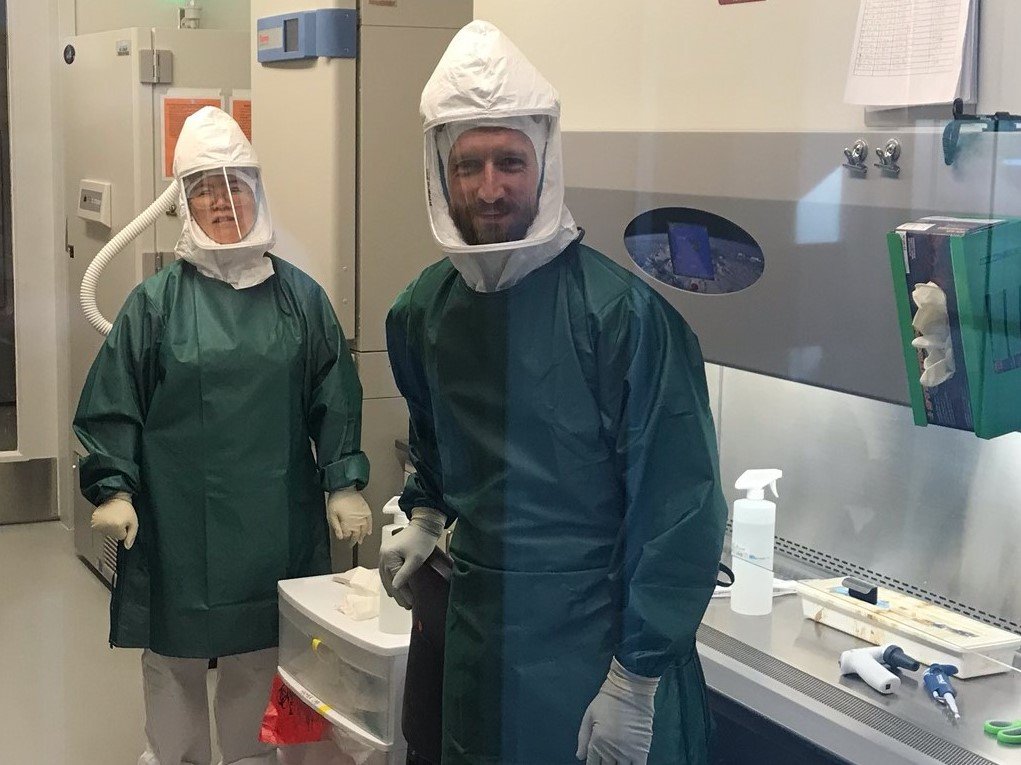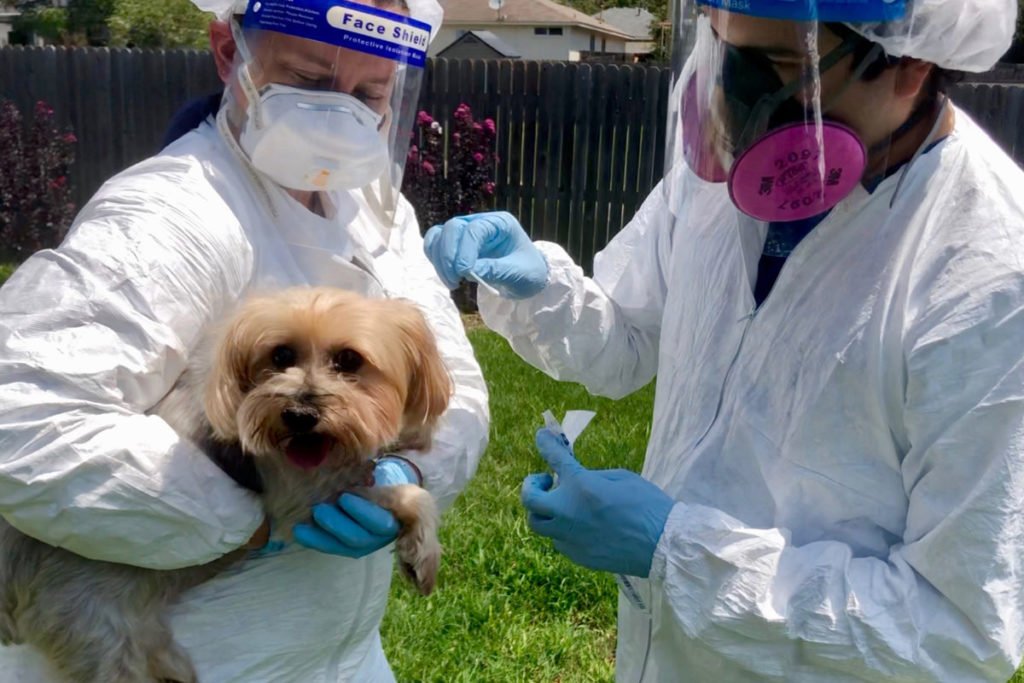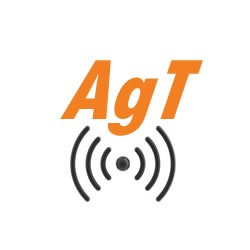With deer hunting a major recreational activity and economic benefit to the Texas economy, understanding more about the nexus of hunters, deer and the possibility of zoonotic disease transmission is important in ensuring the industry’s overall safety and sustainability.

There are more than 10,000 captive cervid facilities throughout the U.S. where deer are bred, according to The Wildlife Society, and more than 500 of these facilities are in Texas.
“Captive cervid facilities are part of an industry that involves raising deer to be used as breeding stock or for hunting,” said John Tomecek, Ph.D., Texas A&M AgriLife Extension Service wildlife specialist in the Department of Rangeland, Wildlife and Fisheries Management in the College of Agriculture and Life Sciences.
Tomecek said there are some exposures related to keeping animals in a closer proximity than what would be normal in the wild, including the possibility of disease transmission.
“Disease transmission is a concern anywhere animals are kept close together, and research has shown there is a correlation between their population density and the rate of transmission,” he said. “There have not only been instances of captive animal-to-animal disease transmission, but also transmission between captive animals and wild populations. SARS-CoV-2 has had an impact on other wildlife, including some endangered species.”
A new study by Texas A&M’s College of Veterinary Medicine and Biomedical Sciences has revealed that captive white-tailed deer in Texas are susceptible to SARS-CoV-2, the virus that causes COVID-19. With over 90% of the captive deer at one facility testing positive for the virus, the authors indicate their findings likely reflect deer-to-deer transmission.
What spurred the research?
Within The Texas A&M University System, researchers have been investigating how animals are involved in the transmission of SARS-CoV-2 since the summer of 2020. Their initial work detailed infections in about a quarter of the dogs and cats that lived in households with infected owners in Central Texas and led to questions about other animals that interact with humans.
Additionally, work conducted last year by the U.S. Department of Agriculture’s Animal and Plant Health Inspection Service, APHIS, showed free-ranging white-tailed deer populations across Illinois, Michigan, New York and Pennsylvania had produced SARS-CoV-2 antibodies, which indicated they had been exposed to COVID.
The Texas A&M University System research team then developed collaborations for a study on captive white-tail deer in Texas, focused on animal health and the potential for viral transmission from infected animals to other animals.
Sarah Hamer, Ph.D., DVM, associate professor of epidemiology at Texas A&M’s College of Veterinary Medicine and Biomedical Sciences and principal investigator for the new study, said since free-ranging white-tailed deer with evidence of SARS-CoV-2 infection have been found in several states, now including Texas. She said it was important to understand how the risk to captive deer may be similar or different.
“These studies open our eyes to a less ‘human-centric’ perspective on COVID transmission and to the need to investigate potential animal reservoirs for the disease,” she said.
Specifics of the study
White-tailed deer have been shown to be susceptible to SARS-CoV-2 because their ACE2, or angiotensin converting enzyme 2, which is where the virus attaches, is very similar to that of humans, said Terry Hensley, DVM, assistant agency director for diagnostic services with the Texas A&M Veterinary Medical Diagnostic Laboratory, Bryan-College Station.
“However, while the white-tailed deer in the USDA study were able to be infected with SARS- CoV-2, then shed the virus and infect other deer in the study, they did not develop any observable clinical illness from the virus,” he said. “We still have a lot to learn concerning SARS-CoV-2 and wildlife.”


The Texas A&M study, which involved graduate student, postdoctoral, faculty and veterinarian researchers, involved the use of plaque reduction neutralization assays to test for SARS-CoV-2 antibodies in 80 deer at three captive cervid facilities in Central and South Texas, and additional work is ongoing.
Samples were tested in a Biosafety Level 3 laboratory at the Texas A&M Veterinary Medical Diagnostic Laboratory.
“The level of infection we detected, which was more than 90% of the tested captive deer at one facility, cannot be explained by human contact alone,” said Hamer, who also oversees a research laboratory focused on the ecology, evolution and epidemiology of vector-borne wildlife and zoonotic diseases using field-based studies and molecular tools.
“Only a subset of the deer that tested seropositive had close or direct contact with humans,” she explained. “While there may have been some initial human-to-deer transmission of the virus, the vast majority of transmission at that facility appears to have been from deer to deer.”
Hamer also noted the prevalence of COVID-positive deer in the one Texas facility was more than double the amount reported in recent studies of wild deer populations in Texas and some northern states.
The research and its benefits
The study will help researchers better understand the interaction between humans and wild and/or managed animals and the virus, Hamer said. She added that study results may be especially applicable in facilities where wildlife is actively managed and fed through human contact.
“This information could be useful not only to captive cervid facilities, but also zoos and other locations where animals are in close contact with humans and are at a much closer distance from one another than what would be normal for them in the wild,” Hamer said. “It’s also important that we understand transmission among captive cervids and other managed animals so we can get a better picture of their role in the occurrence of SARS-CoV-2.”
Other insights from the study
The study confirmed white-tailed deer typically do not get symptoms of SARS-CoV-2 but are easily able to contract and transmit the disease, said Walter Cook, DVM, a study co-author and wildlife veterinarian and clinical associate professor in College of Veterinary Medicine and Biomedical Sciences. Other study co-authors from the College included doctoral students Chase Nunez and Logan Thomas.
Cook said other studies have shown certain wildlife to be susceptible to the virus, and what they learned in the new study could help in better understanding how they may transmit the disease.


Previous studies have shown domestic animals such as dogs and house cats can also contract the SARS-CoV-2 virus as a result of contact with infected humans. Hamer was also principal investigator in a Texas A&M-led study in March of last year that, for the first time worldwide, detected the United Kingdom variant of SARS-CoV-2 in a dog and a cat from the same household in Texas.
The new study will be helpful toward finding out whether there might be onward transmission from infected animals to animals of the same or a different species – or possibly back to people.
Hamer said vaccine manufacturers have already created veterinary vaccines for animals that are being used in some zoo environments to protect animals shown to develop disease when infected.
“If we find that infection will endanger the life of animals, or if animals can readily spread the virus to humans, then there will be lots of motivation to also consider widespread vaccination of target animals against SARS-CoV-2,” she said. “But this is not the situation, and the most impact right now will be from vaccinating people.”
What about deer hunting and meat preparation/consumption?
Rebecca Dittmar, AgriLife Extension family and community health specialist for food protection management, Kerrville, said safe handling and processing of animals in the field is critical to human and wild game safety.
“Hunters coming in contact with animal carcasses and harvesting wild game should be aware of the possibility of zoonotic diseases and foodborne illness,” Dittmar said.
Deer in the wild are susceptible to chronic wasting disease, tick-borne diseases, brucellosis and other diseases. Results of the new study suggest SARS-CoV-2 transmission might be another factor for consideration in the hunting and harvesting of deer.
Hensley said if a hunter follows recommended guidelines when handling a deer carcass or any other wild game during field dressing and processing, there is little likelihood of acquiring any infectious disease, including SARS-CoV-2.
“Venison is a lean, healthy red meat,” he said. “The accepted recommendation is that venison be cooked to a minimum internal temperature of 145 degrees for steak and 165 for ground venison. This should destroy any pathogen, so again there is little to no risk of transmission.”
Dittmar said AgriLife Extension has publications and instructional videos to help hunters ensure their own safety and the safety of the wild game they harvest. Topics include how to properly field dress an animal, packaging meat for storage, cooking wild game and chronic wasting disease.
She said the publication, “From Field to Plate: Benefits of Locally Harvested Wild Game in Texas and How to Keep It Safe,” provides information on the tools and proper steps needed in processing an animal carcass.
AgriLife Extension also has a short instructional video titled “Hunting Safety: Field Dressing Wild Game” that shows the steps required to safely field dress a large wild game animal.
-30-







![[Podcast] Deere’s Autonomous Tractor & Mainstreaming Autonomy with Scott Shearer](../ext/resources/aei/2022/john-deere-autonomous-tractor.jpg)




